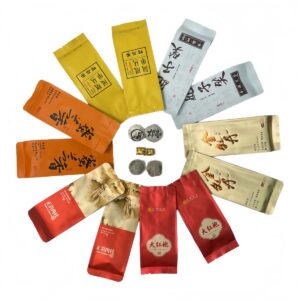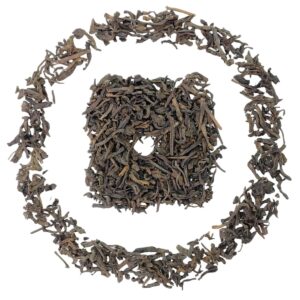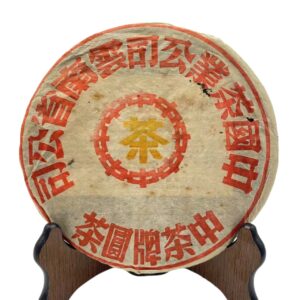Best pu erh tea lovers know that a single cup can transport you to misty Yunnan mountains, where centuries-old tea trees whisper in the breeze. Whether you seek a ritual of mindful sipping, the promise of aged pu erh tea’s mellow sweetness, or the healthful edge of pu erh tea and anti-aging antioxidants, choosing the best pu erh tea is the first sip on an unforgettable journey.
This guide unveils how to identify, brew, and savor the best pu erh tea—exploring signature varietals from Yiwu and Bulang Mountain, decoding raw vs. ripe distinctions, and spotlighting aged pu erh tea treasures. Let’s dive into the world of Pu Erh, where flavor meets wellness and every infusion tells a story.
What Makes the Best Pu Erh Tea?
Before hunting for the best pu erh tea, understand what sets it apart:
- Type: Raw vs. Ripe
- Raw (Sheng) Pu Erh: Crisp, vegetal, evolving over decades into honeyed complexity.
- Ripe (Shu) Pu Erh: Earthy, chocolaty, achieved in months through “wet piling.”
- Leaf Age & Tree Heritage
- Ancient tree leaves (gushu) yield profound depth.
- Garden plantations (yuancha) offer brighter, fresher profiles.
- Region & Terroir
- Soil, altitude, and microclimate shape each cup. Yiwu delivers floral elegance; Bulang Mountain gifts earthy resonance.
- Processing & Aging
- Traditional compression into cakes or bricks; controlled humidity and time transform tea into aged pu erh tea jewels.
These criteria ensure your selection of the best pu erh tea is rooted in authenticity, quality, and sensory delight.
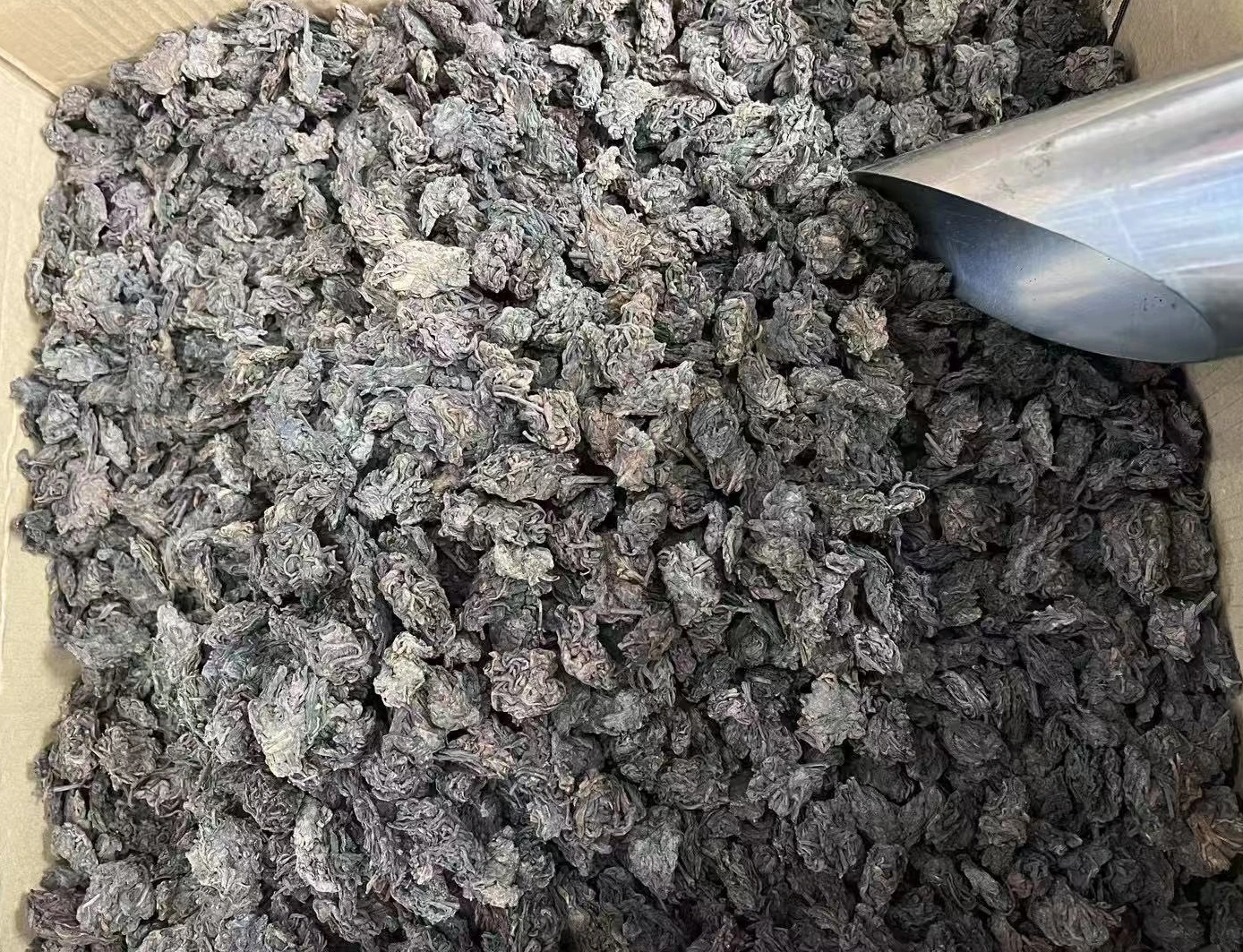
Top Varietals of Best Pu Erh Tea
Yiwu Pu Erh Tea: Floral Elegance
Nestled in the southeastern hills of Yunnan, Yiwu’s high-altitude groves produce Yiwu Pu Erh Tea prized for gentle floral notes and subtle honey sweetness. A sip of this varietal will reveal:
- Aroma: Orchard blossoms and spring honeydew.
- Flavor: Soft malt, orchid whisper, and a refreshing finish.
- Texture: Silky, light body with enduring complexity.
For those seeking a refined gateway into Pu Erh, Yiwu ra w cakes, especially aged pu erh tea vintages, stand out as some of the best pu erh tea experiences.
Bulang Mountain Pu Erh Tea: Earthy Depth
On Yunnan’s western frontier, Bulang Mountain’s ancient trees yield a bold Bulang Mountain Pu Erh Tea:
- Aroma: Forest floor, cedar, and dark plum.
- Flavor: Rich earthiness balanced by warming spice.
- Texture: Full-bodied, velvety, with a smoky aftertaste.
Bulang’s terroir-driven character makes it a perennial choice among connoisseurs ranking the best pu erh tea, especially when exploring aged pu erh tea that deepens over time.
Xishuangbanna & Menghai Classics
- Xishuangbanna Pu Erh: Tropical humidity produces tea with vibrant freshness and subtle tobacco notes.
- Menghai Pu Erh: Home of the legendary Dayi factory, Menghai cakes blend sweet malt and decades-old seasoning.
Both regions contribute iconic selections to any best pu erh tea collection.
Aged Pu Erh Tea: Time’s Alchemy
Few pleasures rival the allure of aged pu erh tea. Whether raw or ripe, a 10-, 20-, or even 30-year vintage evolves:
- Raw Aged: Transforms grassy bite into cocoa-sweet velvet.
- Ripe Aged: Sweetens chocolaty depth into molasses and tobacco nuances.
These time-touched treasures often define the pinnacle of “best pu erh tea” for collectors seeking legendary complexity.
Health Benefits of Best Pu Erh Tea
Beyond sensory richness, the best pu erh tea delivers wellness perks:
Digestion & Gut Health
Rich in microbial byproducts and polyphenols, Pu Erh:
- Stimulates Enzymes: Promotes healthy bile flow and fat breakdown.
- Balances Flora: Fermented compounds support gut microbiome and regularity.
A post-meal pour of best pu erh tea can feel like a gentle, nurturing embrace for your digestive system.
Cholesterol & Heart Support
Studies link Pu Erh tea to:
- Lower LDL Levels: Tea sterols and theabrownins help reduce “bad” cholesterol.
- Improved Circulation: Antioxidants protect arterial walls and promote vascular health.
A daily cup of the best pu erh tea may complement heart-healthy habits.
Pu Erh Tea and Anti-Aging
Among the many merits of best pu erh tea is its antioxidant potency:
- Polyphenol Power: Scavenges free radicals, combating cellular aging.
- Skin Vitality: Regular sipping may support collagen integrity and youthful radiance.
While not a miracle elixir, Pu Erh’s antioxidant array makes it a delightful addition to an anti-aging tea routine.
How to Choose Your Best Pu Erh Tea
Selecting truly exceptional Pu Erh involves:
- Origin Labels & Harvest Year
Seek clarity on region (Yiwu, Bulang, Menghai) and vintage date. - Form: Cake vs. Brick vs. Loose Leaf
- Cakes (Bingcha): Ideal for aging; balanced fermentation.
- Bricks (Zhuancha): Compact, dense aging; great for cellaring.
- Loose Leaf (Maocha): Fresh profiles; quicker aging.
- Leaf Appearance & Scent
- Intact, twisted leaves with occasional golden tips.
- Clean earthy fragrance, free from mold or mustiness.
- Trusted Brands & Price
- Historic tea companies (Dayi, Xiaguan) often guarantee quality.
- Rare aged pu erh tea commands higher prices; balance budget with desired age.
These pointers guide you to the best pu erh tea that aligns with your taste and wellness goals.
Brewing the Best Pu Erh Tea
Rinse & Awaken
- Quick Wash: Pour near-boiling water for 5–10 seconds to remove dust and prime leaves.
Water Temperature & Steep Times
- Raw Pu Erh (Sheng):
- 95–100 °C water
- Short infusions starting at 10–15 seconds; gradually increase to 30 seconds over 6–8 steeps.
- Ripe Pu Erh (Shu):
- 90–95 °C water
- 20–30 second infusions; extend by 5–10 seconds for aged cakes.
Gongfu-Style vs Western-Style
- Gongfu Style: High leaf ratio in a gaiwan; multiple short steeps reveal nuanced layers—preferred for aged pu erh tea tastings.
- Western Style: One to two teaspoons per cup, 3–5 minute infusion—perfect for daily convenience.
Tips for Aged Pu Erh Tea
- Extended Rinses: Two quick washes for older cakes release deeper fragrances.
- Patience: Let older brews rest a few seconds longer to coax out mellow sweetness.
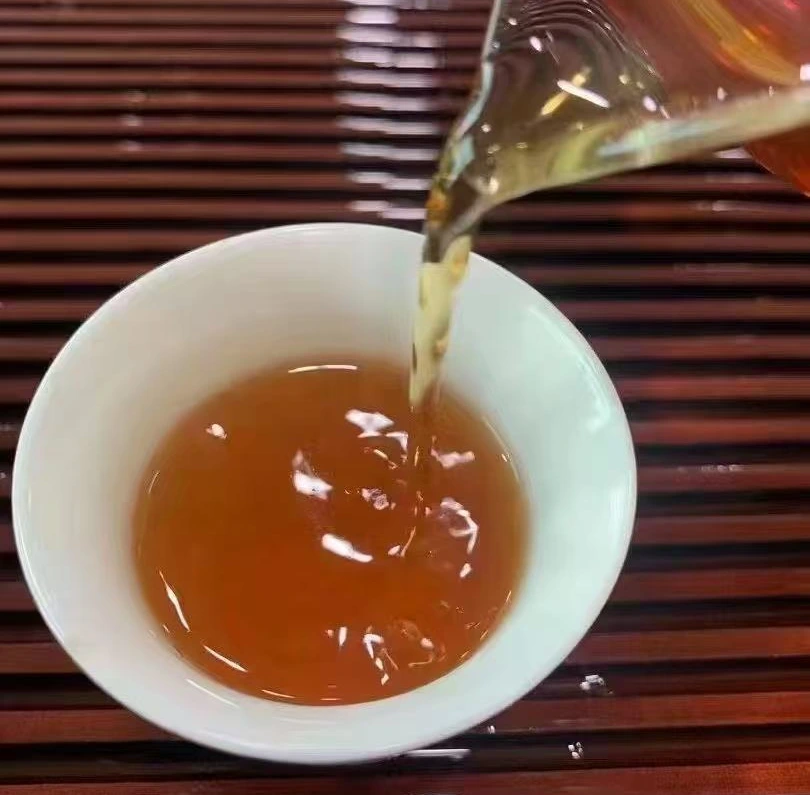
🔗 For more tea brewing methods, check out the YouTube video explaining the brewing methods.
FAQs About Best Pu Erh Tea
- How long should I age Pu Erh?
- Raw: 5–30 years; Ripe: drinkable in months but can age happily for decades.
- Which is better: raw or ripe Pu Erh?
- Raw offers evolving complexity; ripe delivers immediate smoothness—choose based on palate and patience.
- How many steeps can I get?
- Raw cakes: 8–15 infusions; Ripe cakes: 6–10 infusions, each revealing fresh aromas.
Conclusion: Find Your Best Pu Erh Tea
From the floral whisper of Yiwu pu erh tea to the earthy roar of Bulang Mountain pu erh tea, the quest for the best pu erh tea is a journey of taste, time, and tradition. Whether you seek the creamy sweet depths of aged pu erh tea or the invigorating bite of a young raw cake, your perfect cup awaits. Embrace the ritual—select with care, brew with intention, and savor each sip of the world’s most storied tea.

